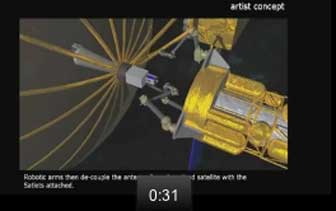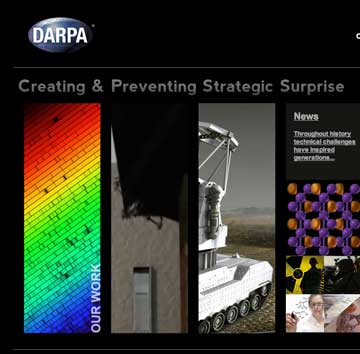
Military satellites are critical sources of communications and data for today’s operations environments. Through DARPA’s Phoenix program, useable antennas or solar arrays from retired satellites in geosynchronous orbit (GEO – 36,000 kilometers above Earth) could be removed and potentially repurposed as components for new satellites to provide vital mission support. However, identifying cooperating satellites from which to harvest an array is a difficult and lengthy task using current ground-based satellite imaging techniques.
By introducing precise fiber optic controls to ground-based telescopes, this challenge may be overcome. DARPA’s Galileo program seeks to bridge the precision fiber optic controls and long-baseline astronomical interferometry technical communities to enable imaging of objects in GEO faster than is possible today. “We know the fiber optic control community is engaged in precision control of light,” explained Air Force Lt. Col. Travis Blake, DARPA program manager. “If those solutions could be meshed with the unique demands of astronomic imaging, we could develop a new means of better, faster imaging of objects in GEO. We encourage experts from both technical communities to participate in Galileo’s upcoming Proposers’ Day.”

Imaging objects in GEO is a slow process because they don’t move much in the sky relative to the Earth’s rotation. Galileo seeks to harness the power of precision fiber optic controls to connect astronomical interferometry telescopes via flexible fiber optics cable, removing the need for rigid light pipes. Fiber optics technology may enable a larger number of interconnected mobile telescopes, which could more quickly capture the data required of an object in GEO from multiple angles, resulting in faster image creation. DARPA issued a special notice today announcing the upcoming proposers’ day for the Galileo program.
The Defense Advanced Research Projects Agency (DARPA) was established in 1958 to prevent strategic surprise from negatively impacting U.S. national security and create strategic surprise for U.S. adversaries by maintaining the technological superiority of the U.S. military.
To fulfill its mission, the Agency relies on diverse performers to apply multi-disciplinary approaches to both advance knowledge through basic research and create innovative technologies that address current practical problems through applied research. DARPA’s scientific investigations span the gamut from laboratory efforts to the creation of full-scale technology demonstrations in the fields of biology, medicine, computer science, chemistry, physics, engineering, mathematics, material sciences, social sciences, neurosciences and more. As the DoD’s primary innovation engine, DARPA undertakes projects that are finite in duration but that create lasting revolutionary change.

